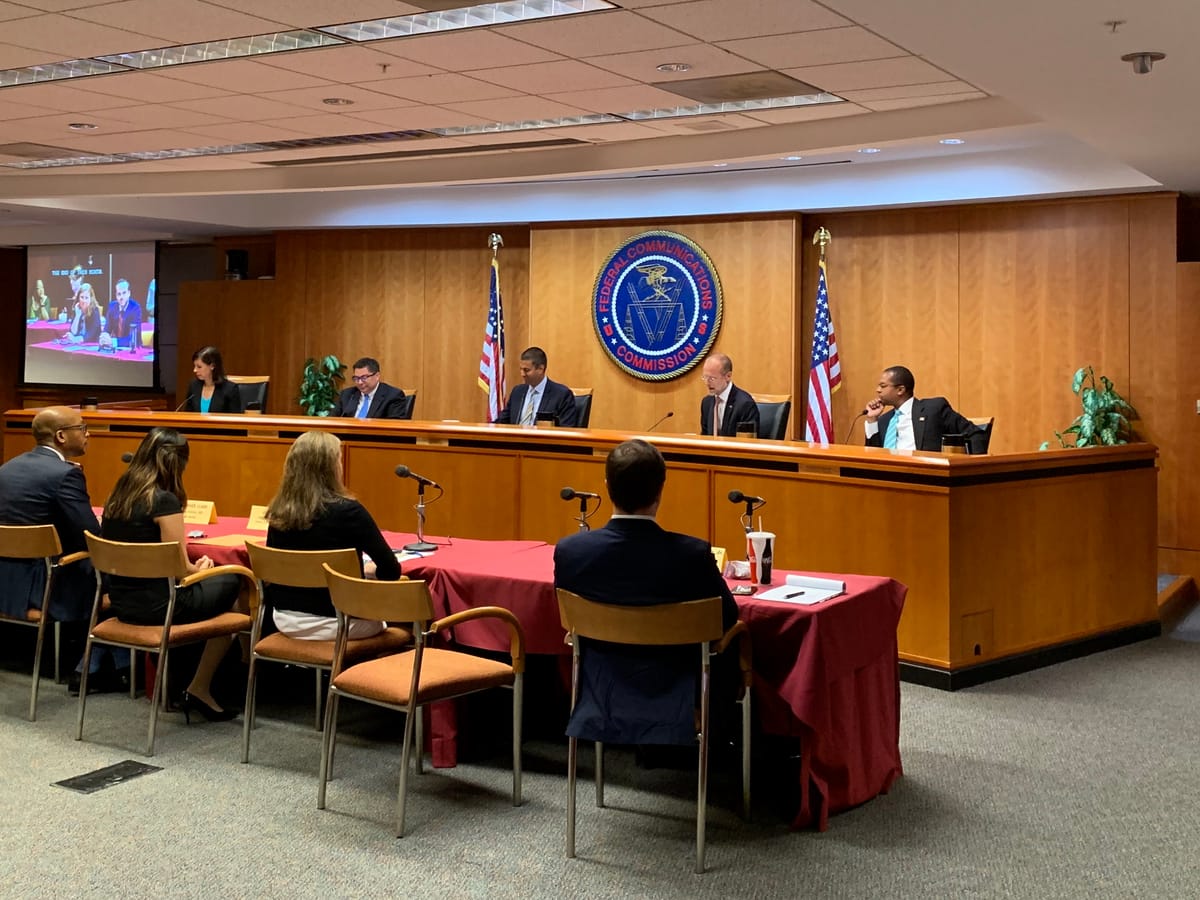Tackling Broadband Mapping Critics, FCC Orders ISPs to Provide Geospatial Data and Will Implement ‘Crowdsourcing’
WASHINGTON, August 1, 2019 — The Federal Communications Commission on Thursday initiated a new process for collecting fixed broadband data for mapping purposes. The new Digital Opportunity Data Collection aims to replace the current, Form 477-based data collection methodology utilized since 2000, o
Em McPhie

WASHINGTON, August 1, 2019 — The Federal Communications Commission on Thursday initiated a new process for collecting fixed broadband data for mapping purposes.
The new Digital Opportunity Data Collection aims to replace the current, Form 477-based data collection methodology utilized since 2000, once the new system is established. Data is currently collected on the Census block level.
The new system will also “adopt a process to collect public input, commonly known as ‘crowdsourcing,’ on the accuracy of service providers’ broadband maps,” according to the agency’s fact sheet.
The Digital Opportunity Data Collection attempts to solve the problem of over-representation, or “false positives,” when as few as one home is served within a given Census block.
It plans to do this by adopting a polygon-based maps that would depict precisely where broadband service is available and where it is not.
In establishing a system of collecting geospatial broadband coverage maps from Internet service providers, adopting a process to collect public input on the accuracy of these maps, and changing the Form 477, the FCC hopes to get past repeated criticism about the quality of existing broadband maps.
The full FCC report and order (and fact sheet) cites a letter from Michael Romano, senior vice president of the Rural Broadband Association, stating that false positives from Form 477 reporting can lead to the “denial or withdrawal of federal USF support in areas where support is in fact needed to reach unserved locations, dooming those locations to a lack of service for years to come.”
In addition, the agency is seeking comment on additional technical standards for fixed broadband providers, or those that are neither wire-based or fixed wireless solutions.
It is also seeking to incorporate location-specific fixed broadband deployment data, the collection of mobile wireless voice and broadband coverage data, and sunsetting the Form 477 broadband deployment collection following the creation of the Digital Opportunity Data Collection.
Although all of the commissioners applauded the steps being taken to improve the maps, Commissioners Michael O’Rielly and Jessica Rosenworcel raised concerns over the amount of responsibility being given to the Universal Service Administrative Company.
USAC has a history of being unresponsive to Congress and FCC Commissioners, said O’Rielly, adding that insufficient coordination among Universal Service Fund programs leads to waste.
Handing responsibilities off to the USF administrator doesn’t make sense, Rosenworcel agreed, pointing out that USAC has never done data collection of this magnitude and that the FCC is better equipped to complete it. Additionally, the
Chairman Ajit Pai briefly addressed these concerns in his remarks, saying that given the universal focus of the mapping initiative, it made sense to give it to USF.
Rosenworcel also asked for more data to be collected, saying that in order to get a truly accurate picture of service, the role of price and affordability also needs to be taken into consideration.
(Photo of FCC Open Meeting by Emily McPhie.)










Member discussion